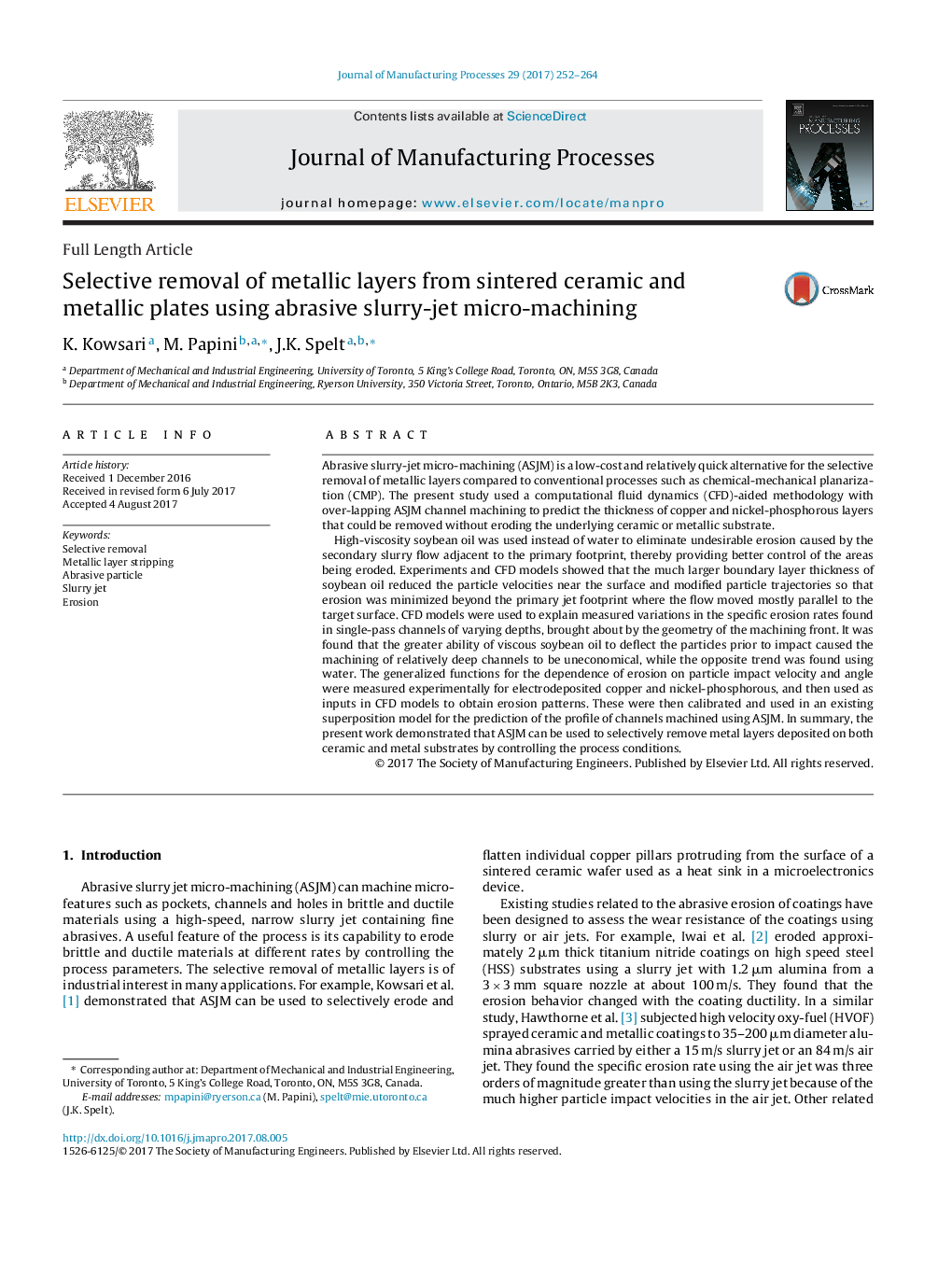| Article ID | Journal | Published Year | Pages | File Type |
|---|---|---|---|---|
| 5469174 | Journal of Manufacturing Processes | 2017 | 13 Pages |
Abstract
High-viscosity soybean oil was used instead of water to eliminate undesirable erosion caused by the secondary slurry flow adjacent to the primary footprint, thereby providing better control of the areas being eroded. Experiments and CFD models showed that the much larger boundary layer thickness of soybean oil reduced the particle velocities near the surface and modified particle trajectories so that erosion was minimized beyond the primary jet footprint where the flow moved mostly parallel to the target surface. CFD models were used to explain measured variations in the specific erosion rates found in single-pass channels of varying depths, brought about by the geometry of the machining front. It was found that the greater ability of viscous soybean oil to deflect the particles prior to impact caused the machining of relatively deep channels to be uneconomical, while the opposite trend was found using water. The generalized functions for the dependence of erosion on particle impact velocity and angle were measured experimentally for electrodeposited copper and nickel-phosphorous, and then used as inputs in CFD models to obtain erosion patterns. These were then calibrated and used in an existing superposition model for the prediction of the profile of channels machined using ASJM. In summary, the present work demonstrated that ASJM can be used to selectively remove metal layers deposited on both ceramic and metal substrates by controlling the process conditions.
Related Topics
Physical Sciences and Engineering
Engineering
Industrial and Manufacturing Engineering
Authors
K. Kowsari, M. Papini, J.K. Spelt,
